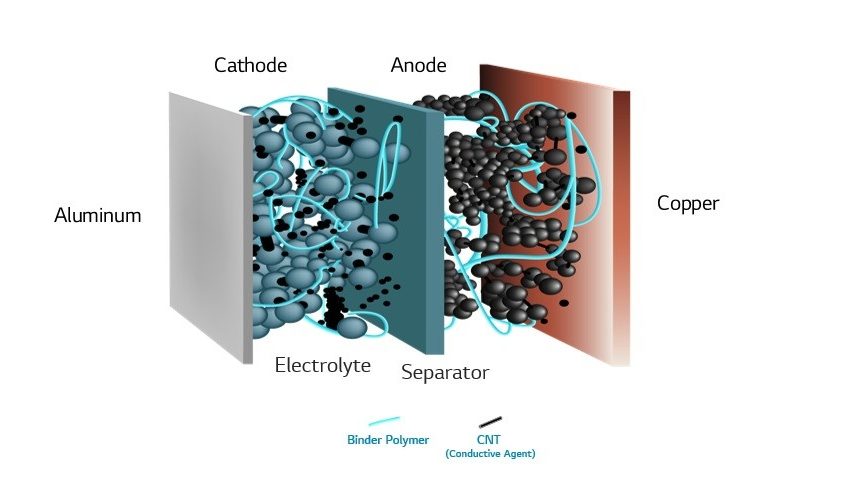In the age of portable devices, electric vehicles, and renewable energy, batteries have become the unsung heroes of modern life, powering our gadgets, vehicles, and even our transition to a more sustainable future. At the heart of these energy storage solutions lies a component that often goes unnoticed but plays a critical role – the battery separator. To delve into the fascinating world of battery separators and their impact on energy efficiency and safety, click here to know more about it.
The Crucial Role of Battery Separators
Understanding Battery Components
Before we unravel the significance of battery separators, it’s essential to comprehend the fundamental components of a typical battery. Batteries consist of three primary parts: an anode, a cathode, and an electrolyte. The anode and cathode store and release electrical energy, while the electrolyte facilitates the movement of ions between them. However, without the fourth element, the separator, the battery would be a recipe for disaster.
Battery separators are thin, porous membranes positioned between the anode and cathode. Their role is deceptively simple yet undeniably critical. They prevent direct contact between the anode and cathode, which, if allowed, would lead to a short circuit and potentially catastrophic consequences. Simultaneously, these separators enable the flow of ions, ensuring that the battery functions as an efficient energy storage device.
Types of Battery Separators
Battery separators come in various materials, each offering distinct advantages and characteristics. The most common separator materials are polyethylene and polypropylene, which are known for their stability and reliability. However, recent advancements have introduced novel separator materials, including ceramics and nanoporous membranes.
Ceramic-coated separators have gained attention for their remarkable thermal stability and resistance to puncture. They play a pivotal role in preventing thermal runaway, a phenomenon that can lead to battery fires. Nanoporous membranes, on the other hand, take advantage of nanotechnology to enhance properties like ion conductivity and thermal stability. These innovations have the potential to revolutionize battery performance.
Evolving Battery Separator Technology
The evolution of battery separator technology is a testament to human ingenuity and the ever-increasing demand for safer, more efficient energy storage solutions. Over the years, separators have transitioned from simple materials to sophisticated components that can make or break a battery’s performance.
Historically, separators were little more than sheets of paper or thin plastic. However, as battery technology advanced, so did the need for more robust separators. Recent innovations, driven by the demand for higher energy density, safety, and efficiency, have ushered in a new era of separator technology. Researchers and manufacturers continue to explore materials and designs that push the boundaries of what batteries can achieve.
Applications and Significance
Consumer Electronics
Battery separators have a ubiquitous presence in our daily lives, especially in the realm of consumer electronics. Our smartphones, laptops, and tablets rely on the efficient operation of lithium-ion batteries, where separators ensure safe and reliable performance. The demand for thinner and more efficient separators in these devices reflects the constant quest for smaller, lighter, and more powerful electronics.
Safety is a paramount concern in consumer electronics, as evidenced by the numerous safety features integrated into battery designs. Battery separators play a crucial role in maintaining the integrity of these devices, preventing thermal events that could endanger users and their surroundings.
Electric Vehicles (EVs)
The electric vehicle (EV) revolution hinges on advanced battery technology, and battery separators are at the forefront of this transformation. EV batteries must provide high energy density, rapid charging capabilities, and exceptional safety to meet the demands of modern transportation.
Battery separators in EVs are subjected to extreme conditions, making their thermal stability and resistance to mechanical stress paramount. High-performance separators ensure that EVs operate safely and efficiently, contributing to the growth of the electric vehicle market and the reduction of greenhouse gas emissions.
Renewable Energy Storage
As the world embraces renewable energy sources like solar and wind power, the role of battery separators in energy storage systems becomes increasingly significant. These systems rely on the efficient capture and storage of energy, which is made possible by high-performance batteries equipped with advanced separators.
Battery separators enable the seamless integration of renewable energy into the grid by providing reliable energy storage solutions. Their use not only promotes the adoption of clean energy but also reduces the strain on conventional power generation methods, contributing to a more sustainable future.
Advancements in Battery Separator Technology
Nanotechnology and Coatings
Nanotechnology has ushered in a new era of battery separator design. Nanocoatings applied to separators enhance their properties, from ion conductivity to thermal stability. These coatings are engineered at the nanoscale, allowing for precise control over separator characteristics. The result is batteries that can deliver more power, charge faster, and operate safely under extreme conditions.
Ceramic-Coated Separators
Ceramic-coated separators represent a significant leap in battery safety technology. These separators are designed to resist punctures and withstand high temperatures, mitigating the risk of thermal runaway and fire incidents. Their application extends beyond consumer electronics, finding a crucial role in high-performance batteries used in electric vehicles and renewable energy storage systems.
Sustainable and Eco-Friendly Separators
The global shift towards sustainability extends to battery technology. Researchers and manufacturers are exploring sustainable and eco-friendly materials for battery separators. Biodegradable polymers and environmentally friendly manufacturing processes are being developed to reduce the environmental impact of battery production and disposal.
Conclusion
In conclusion, the world of battery separators is a dynamic and critical component of modern energy storage solutions. These unsung heroes enable the devices we use daily, power the vehicles of the future, and store clean energy from renewable sources. As technology continues to evolve, so too will the innovations in separator design, leading to safer, more efficient, and more sustainable energy storage solutions. Battery separators are the silent enablers of our energy-dependent world, and their role in enhancing energy efficiency and safety cannot be overstated. Click here to know more about it and explore the fascinating world of battery separators and their contribution to a brighter, more sustainable future.






Leave a Reply